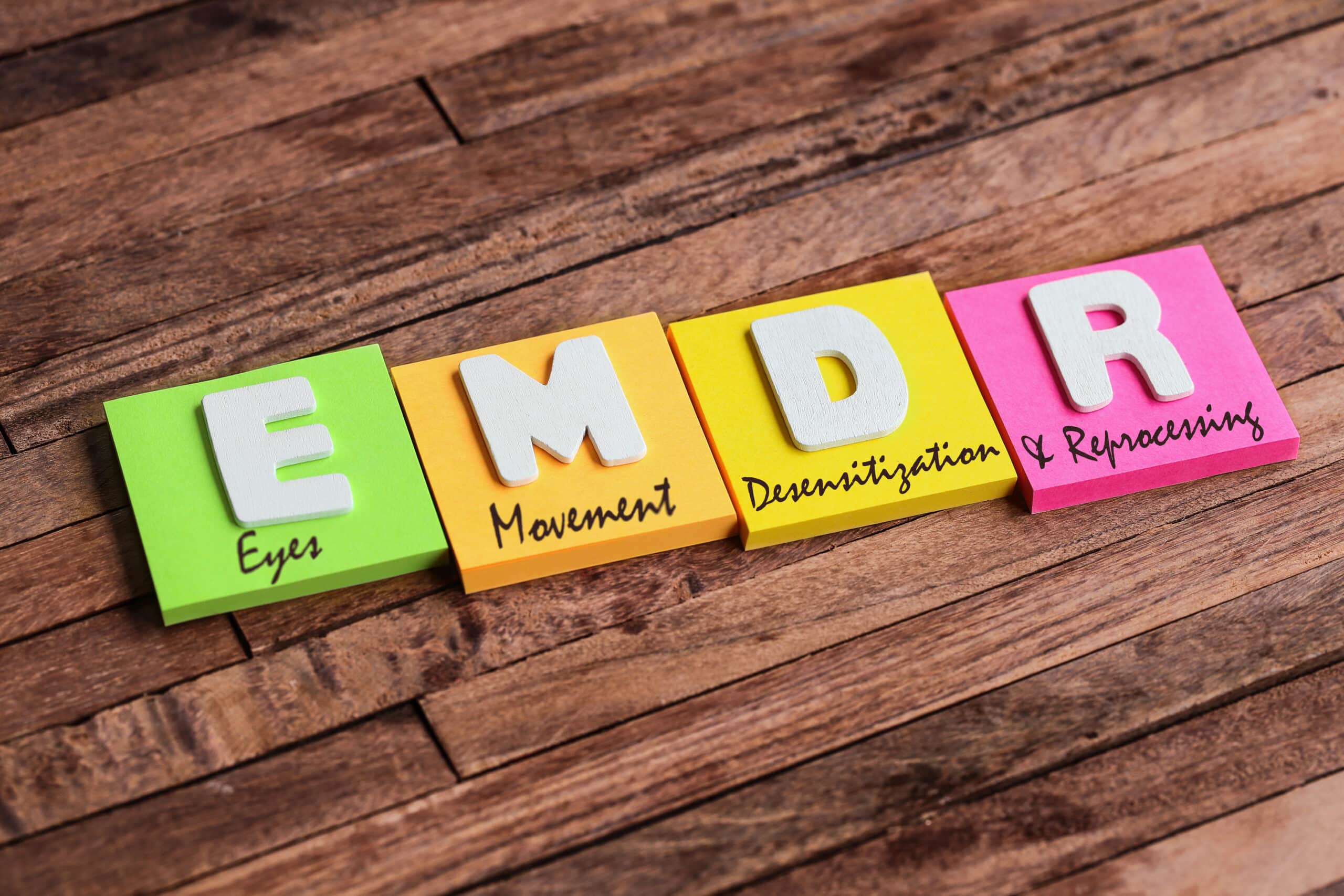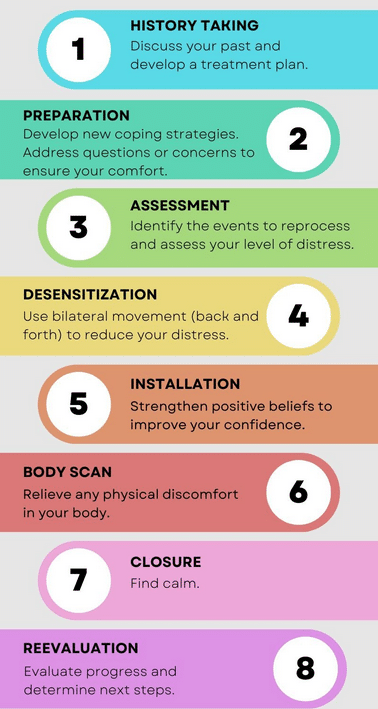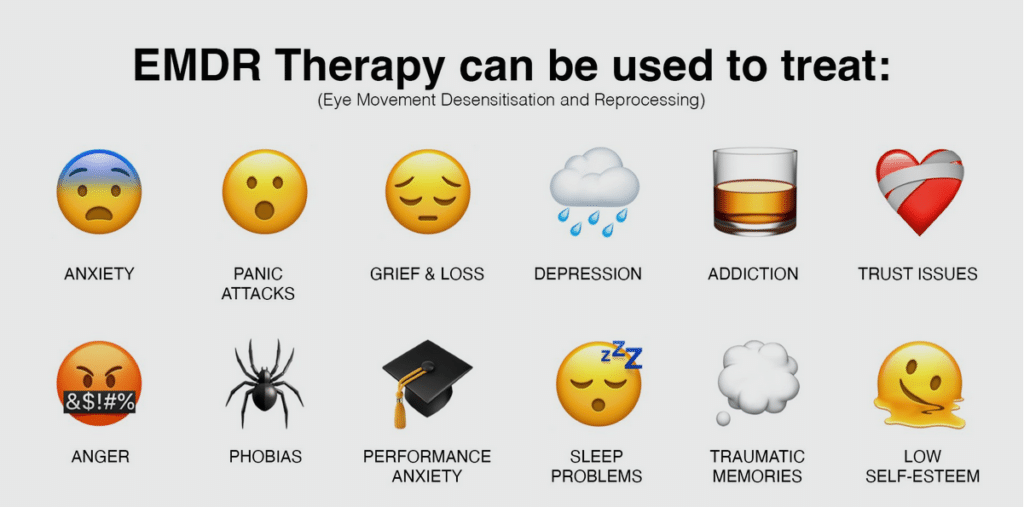EMDR Therapy
Healing Through Reprocessing
Understanding EMDR Therapy
When thinking about starting therapy, it’s natural to feel uncertain about the different approaches available. One modality you might have heard of is Eye Movement Desensitization and Reprocessing (EMDR). While it may sound Complex, we’re here to break it down for you!

What is EMDR Therapy?
EMDR is a specialized therapy that helps people process and heal from traumatic or distressing experiences. When something deeply upsetting happens, your brain might struggle to process the event fully, leaving you feeling stuck. This can manifest as persistent memories, thoughts, or emotions that continue to affect your daily life.
How Does EMDR Work?
Think of your brain like a computer. Under normal circumstances, it processes information smoothly, but after a traumatic experience, a “file” can get stuck. EMDR helps to unstick these files by guiding your brain to reprocess the traumatic memory in a healthier way.
During an EMDR session, you’ll be asked to focus on a specific memory while engaging in bilateral stimulation—this may involve:
- Moving your eyes back and forth
- Listening to alternating tones
- Feeling a gentle tapping on your hands or shoulders
This process helps your brain reprocess the memory without becoming overwhelmed, gradually reducing its emotional impact.

What Can You Expect During an EMDR Session?
One of the unique aspects of EMDR is that it doesn’t require you to talk in detail about the distressing event. Instead, your therapist will guide you through recalling the memory while you focus on an external stimulus (such as eye movements or tapping). Over time, the memory becomes less distressing, allowing you to process it in a way that no longer disrupts your emotional well-being.
Who can Benefit from EMDR?
EMDR is widely used for trauma-related conditions, but it’s also effective in treating:
- Anxiety and panic disorders
- Depression
- Phobias and fears
- PTSD (Post-Traumatic Stress Disorder)
- Grief and loss
- Stress-related disorders
This structured therapy follows an 8-phase approach that is tailored to your unique needs and pace, ensuring a personalized healing journey.

Why Choose EMDR?
If you’re seeking a therapy that helps you move past painful memories and regain control of your emotions, EMDR might be the right fit. It’s a well-researched, evidence-based therapy that has provided relief to countless individuals, allowing them to heal and move forward with their lives.
Take the Next Step
Are you ready to explore how EMDR can help you? Contact us today to schedule a consultation and begin your healing journey.
“The American Psychiatric Association, the American Psychological Association, the International Society for Traumatic Stress Studies, National Alliance on Mental Illness, the Substance Abuse and Mental Health Services Administration, the U.K. National Institute for Health and Care Excellence, the U.S. Dept. of Veterans Affairs/Dept. of Defense, The Cochrane Database of Systematic Reviews, and the World Health Organization, among many other national and international organizations, recognize EMDR therapy as an effective treatment.” EMDRIA.org


